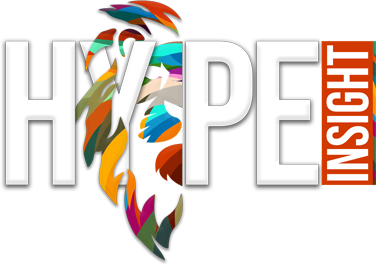Many of its competitors turn to Apple’s line of products and their unveiling events where Apple sets the tone for wearable, mobile, and computing technology.
Although the tech giant isn’t the first to market when it comes to innovative products, the sophistication of the engineering surpasses every other product in the market. Everything from the iMac to the Apple Watch has been able to do just that and Apple’s new Vision Pro marks the brand’s first venture into the world of AR.
Even though a lot of focus has been directed towards the product’s $3,500 price tag, the immersive experience is what dominates the news. Vision Pro is already changing the way people think about consuming entertainment as it blurs the line between the digital world and the real world.
Even though it’s only set to release in early 2024, the Apple Vision Pro is already making waves in the marketing and advertising industries. But before diving into what it means for the marketing community, let’s look at what this game-changing tech can do.
Dissecting Apple’s Vision Pro capabilities
Even though it may seem like just another tech toy for the masses, the $3,500 price quickly shuts down that idea. Apple Vision Pro is reinforcing the brand’s mission to change the way we interact with the digital world.
The device can pair with Bluetooth accessories like Apple’s Magic Keyboard and the Magic Trackpad, giving an enviable amount of control to the user. The device can also be connected to a Mac screen for those who want a more private and portable 4K experience.
The video calling feature also offers a striking experience with a room-filling interface that can expand based on the number of people joining the call. It makes remote presentations and meetings more engaging and the impact it can have on marketing campaigns are nothing short of impressive. So let’s jump right in.
Improved product visualisation
One of the biggest drawbacks when it comes to many purchases is that customers don’t have the option of seeing what their purchases look like in their own homes and spaces. In many scenarios, this can put people off from making a purchase—especially one that can put a dent in their wallet.
Even though AR isn’t anything new and the iPhone has supported it for years, AR visualisation is generally limited because it’s contained to the screen you’re holding and lacks true immersion. The Apple Vision Pro gives better AR capabilities as brands can demonstrate how their products would function in real-life and real-life scenarios.
Apple’s new headset allows marketers to bridge the gap between reality and imagination and help customers engage better, and has an immersive experience that can drive sales.
Interactive marketing campaigns
As impressive as today’s mobile phones and devices are, they lack consumers’ active participation when it comes to marketing campaigns and advertisements. Consumers are more likely to continue passive consumption of information rather than truly engaging with the content and experience that’s being offered.
Vision Pro’s sensors allow consumers to experience interactive ad campaigns which lets users engage through voice commands, gestures, and even physical movements. This gives consumers a better way to connect to these brands than other mediums such as the internet or even TVs.
For instance, if you’re a company that specialises in foreign tourism, Vision Pro can help your customers get a limited immersive experience into new and exotic locations around the world before investing in a 10-day physical tour of the location.
If that’s not mind-blowing enough, Apple Vision Pro could even be the catalyst for revamping today’s VR tourism industry into something that escapes imagination!
Personalised experiences and data-driven marketing
Customised content is the holy grail of delivering hyper-relevant messaging to customers and by analysing user data, marketers can provide better recommendations and offers through Vision Pro.
The ability to collect important customer information through marketing and advertising is another benefit that Vision Pro offers its discerning users. The headset can capture eye-gaze patterns, user interactions, and even emotions, making this a great way to get unprecedented insights into consumer behaviour like never before!
This information can be used to create personalised content, refine marketing strategies, and generate hyper-targeted marketing and advertising campaigns.
Online to offline integration
As the most sophisticated virtual experience to hit the market, Vision Pro is doing an excellent job of seamlessly blending offline and online experiences, creating a much easier way for customers to make the transition from showing interest to purchasing it.
By integrating AR with eCommerce functions, brands can facilitate product purchasing, creating a much smoother and quicker path to conversion. AR in advertisements can even be placed in strategic locations targeting consumers’ surroundings or even be integrated into everyday objects for maximum engagement.
Apple Vision Pro: What it means for the future of marketing
Though Apple’s Vision Pro is still in its infancy and many things could change between now and its 2024 release, marketers are already making plans for what the future of their industry could look like. It’s also important to remember that even with its release, developers will continue to make alterations and tweaks in the operating system to keep broadening the experiences and applications it offers.
The future of marketing is here and innovations like Vision Pro are fuelling the process. As the world around us changes, marketers need to embrace these changes to reach customers in a meaningful way.
What Apple’s Vision Pro offers isn’t just another high-priced headset—it’s a look into what the future of marketing could look like as more brands follow suit.


